
Leaving the nearest housing development, the false spring was evident already. We had warm weather in January that tricked some of the trees into budding out. But it was followed by a couple of vicious weeks in February that grounded most bees.
Here is a small peach tree from someone’s front yard that has a bird’s nest in it. The poor tree is all dressed up with no one to pollinate it. Hopefully, a few early winged insects will brave the cold snap and flutter the pollen around.
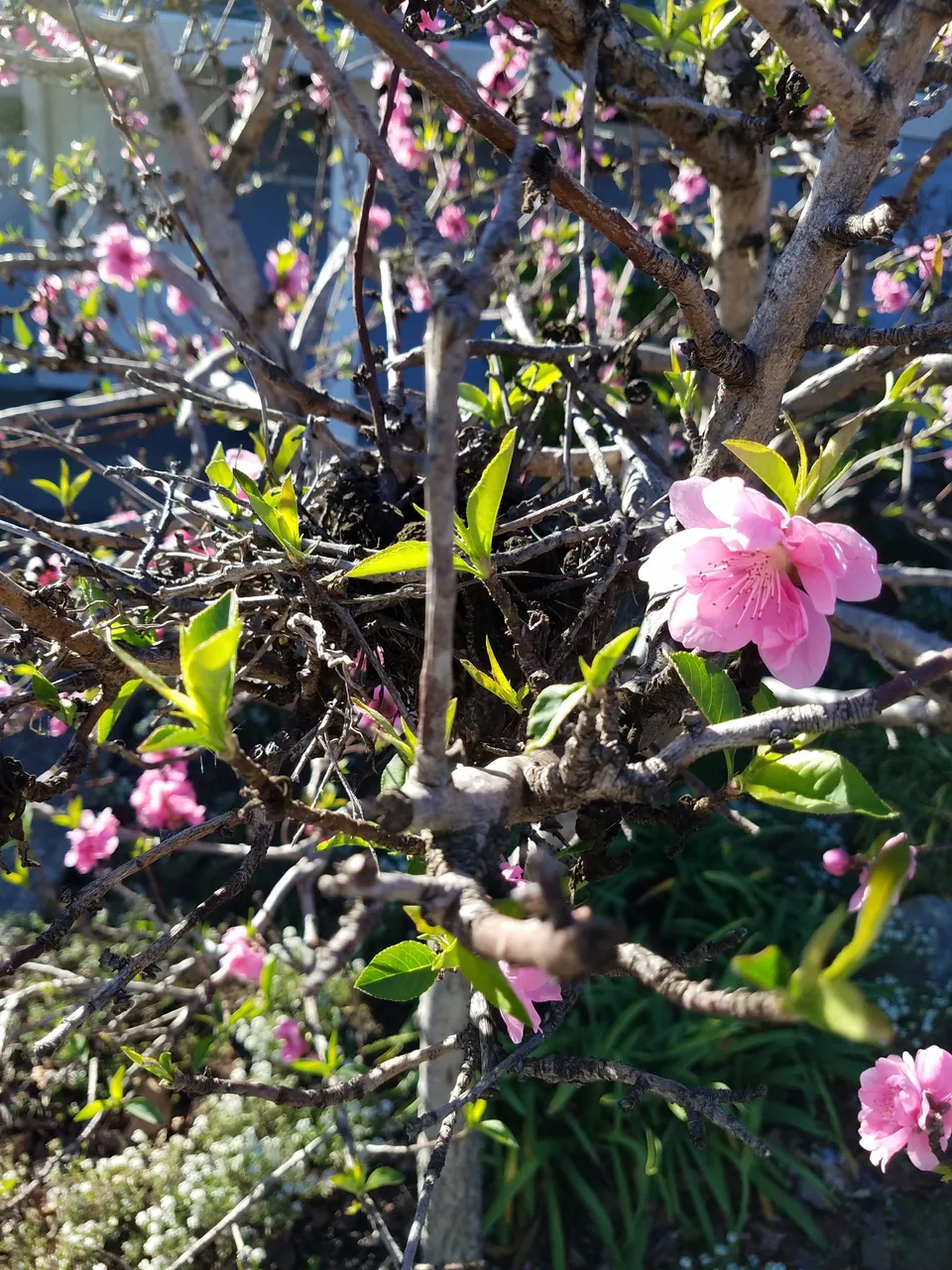
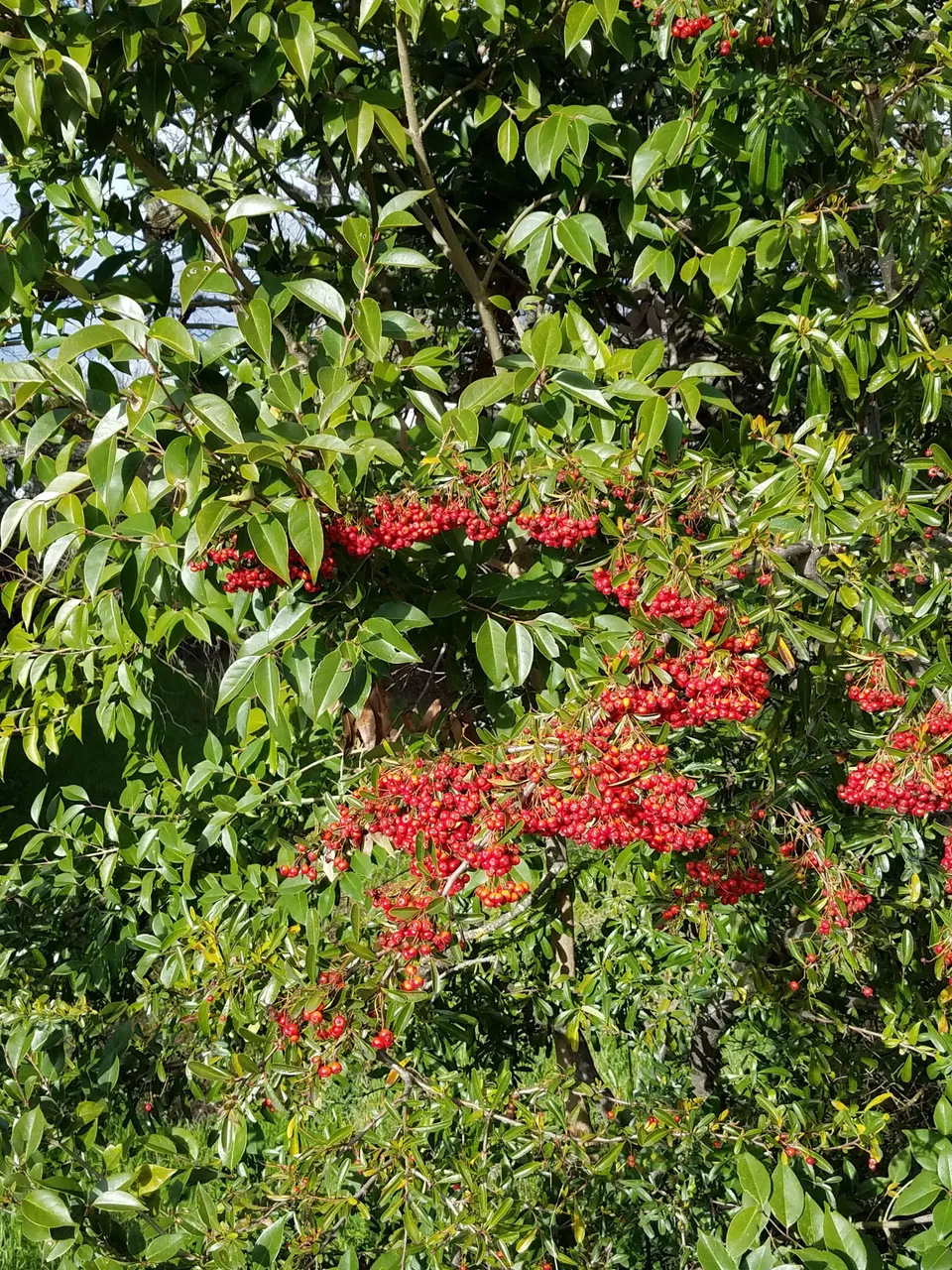
Above: Peach tree with bird's nest. Below: Bay laurel tree in the back with pyracantha bush in the foreground. Unfortunately, those berries are only for the birds.
The trail goes through a small field and then disappears into a forest of oak and bay laurel trees. If you’re familiar with culinary bay leaves, the rich aroma of the California bay laurel leaves is similar. They do not taste quite as good in cooking as the Mediterranean (culinary) bay leaves, which give a warm background flavor to stews and hearty tomato sauces.
You can use a smaller quantity of California bay leaves to similar effect, though it has a much sharper taste and using too much will overpower your food. The nuts are edible also and can be roasted for a beverage like coffee. I’ll leave them to the squirrels and the experienced foragers. For now, the flowers are just beginning, so there are no bay nuts yet.
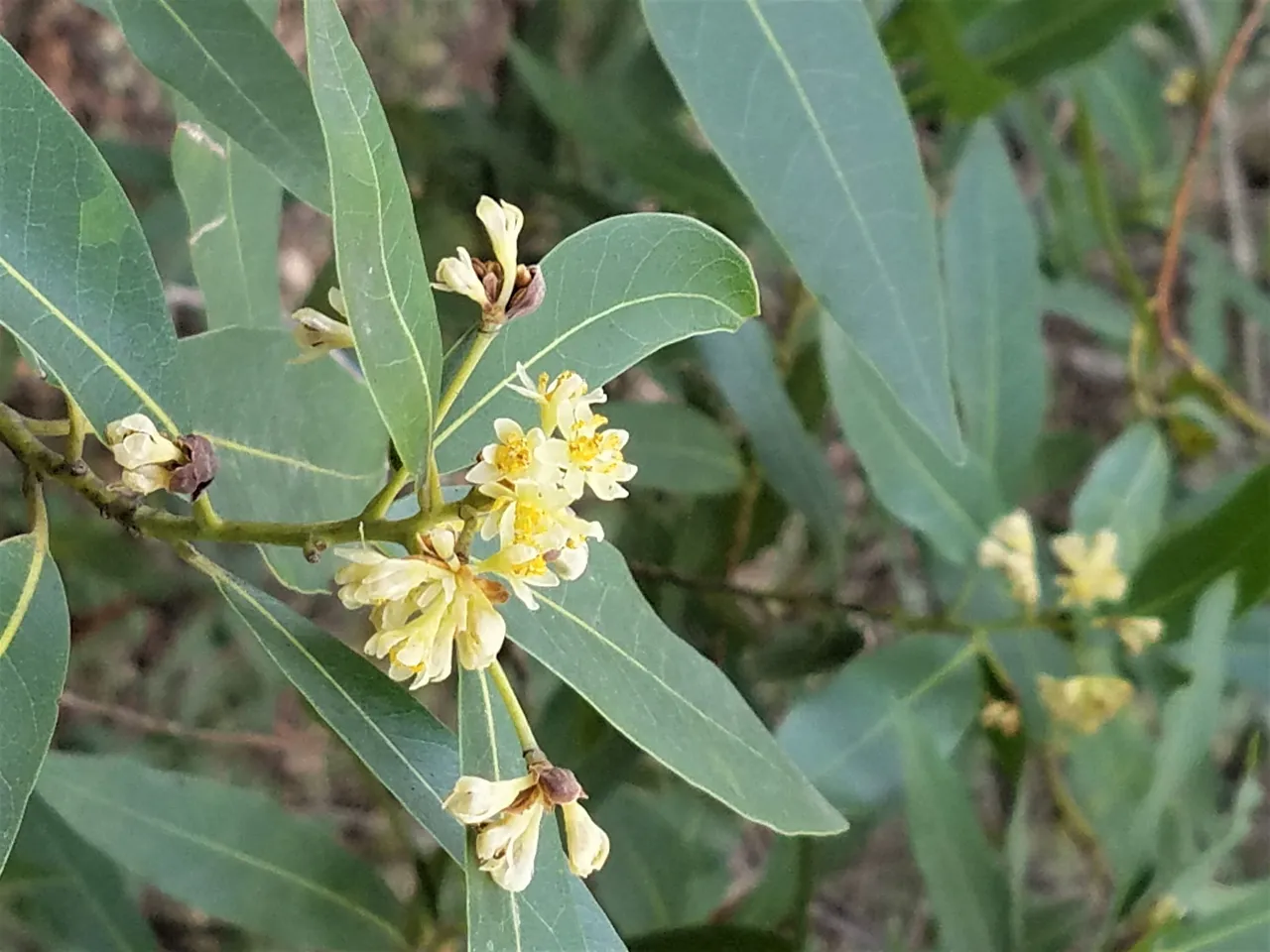
Walking in a forest carpeted by fallen bay and oak leaves releases their warm and nutty aromas most pleasantly. Both trees have dark green leaves and twisty branches. Where the forest breaks into a small meadow, a carpet of brighter green grows. Grasses, thistles, nettles, miner’s lettuce, and cow parsnips are getting an early start on spring. In addition, there are a few plants I suspect of being future wildflowers, but none are blooming yet.
While I did not plan this hike for foraging purposes, it is amazing how many edible plants I can see. Only some are at edible stages this early in the year. Down near the creek are some blackberry bushes and they will not have ripe berries on them until July or August. For the adventurous, there are the bay tree nuts and oak tree acorns; the latter need to be prepared in a way that removes the tannins, since they are too bitter for humans. Cow parsnips grow roots that are quite edible, but preparing them is labor intensive, since the outside is covered with some spikes that contain some mildly poisonous ingredient.
And then there are the wild anise plants. The ghosts of last year’s crop still stand, but you can see the new ones starting to grow around the base. Later in the summer and fall, the stalks will be delicious. They taste like licorice (but make sure not to eat the poisonous hemlock, which looks similar).

The nettles are starting also. Stinging nettle is the best known and touching it can give you a rash, but the leaves are a very nutritious green vegetable. Blanche them in hot water for a few seconds, then cook, and the offensive substance will be gone.
Best of all for fresh eating is the miner’s lettuce, a species of Claytonia also known as winter purslane. This stuff is such a tasty treat and it needs no cooking. The next couple of weeks is high season for free salads in my region, as open spaces in wet microclimates are blanketed with the thick, succulent leaves growing on their juicy stems. It is a very tender salad green, almost like eating a light lettuce such as iceberg or romaine.
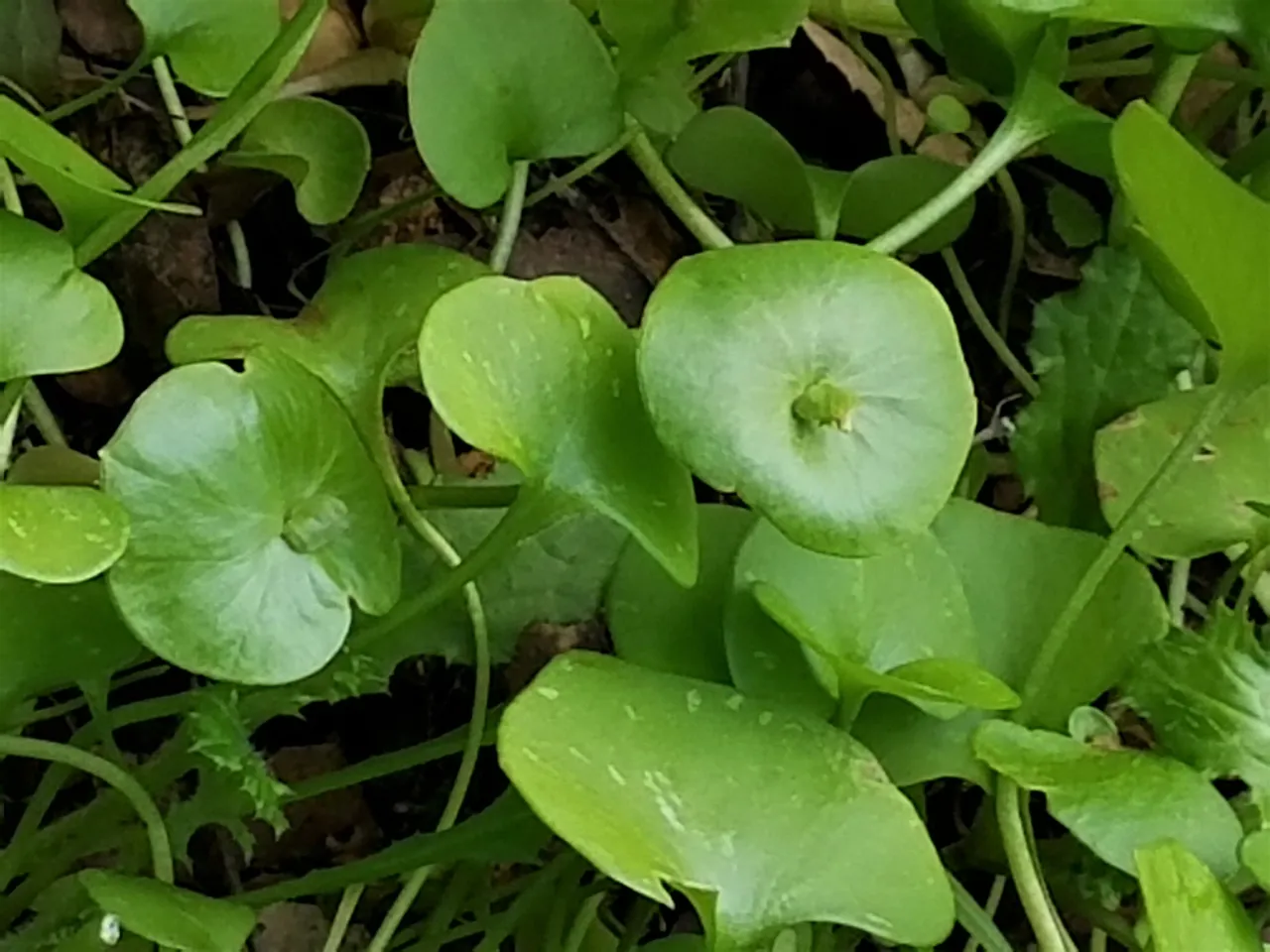

Miner's lettuce with its lovely heart-shaped small leaves and rounded mature ones. The flowers grow up inside these leaves and are edible also.
Miner’s lettuce is appropriately named because the gold miners who came to California beginning in 1849 ate miner’s lettuce to keep them from getting scurvy. Miner’s lettuce is high in vitamin C and other nutrients. One average sized salad’s worth of miner’s lettuce greens will give you 33% of your daily vitamin C needs, 22% of your vitamin A, and 10% of your iron.
In addition, like all purslane family greens, miner’s lettuce contains some omega-3 fatty acids, which are good for your skin, your brain, and other parts of your body. This is an unusual concentration in any plant because omega-3 fatty acids in the human diet normally come from animal sources such as coldwater fish (like salmon) or eggs from pastured chickens. Flax seeds, chia seeds, canola oil and certain algae are the only other non-animal sources I know about; miner’s lettuce is a more enjoyable way to get those omegas.
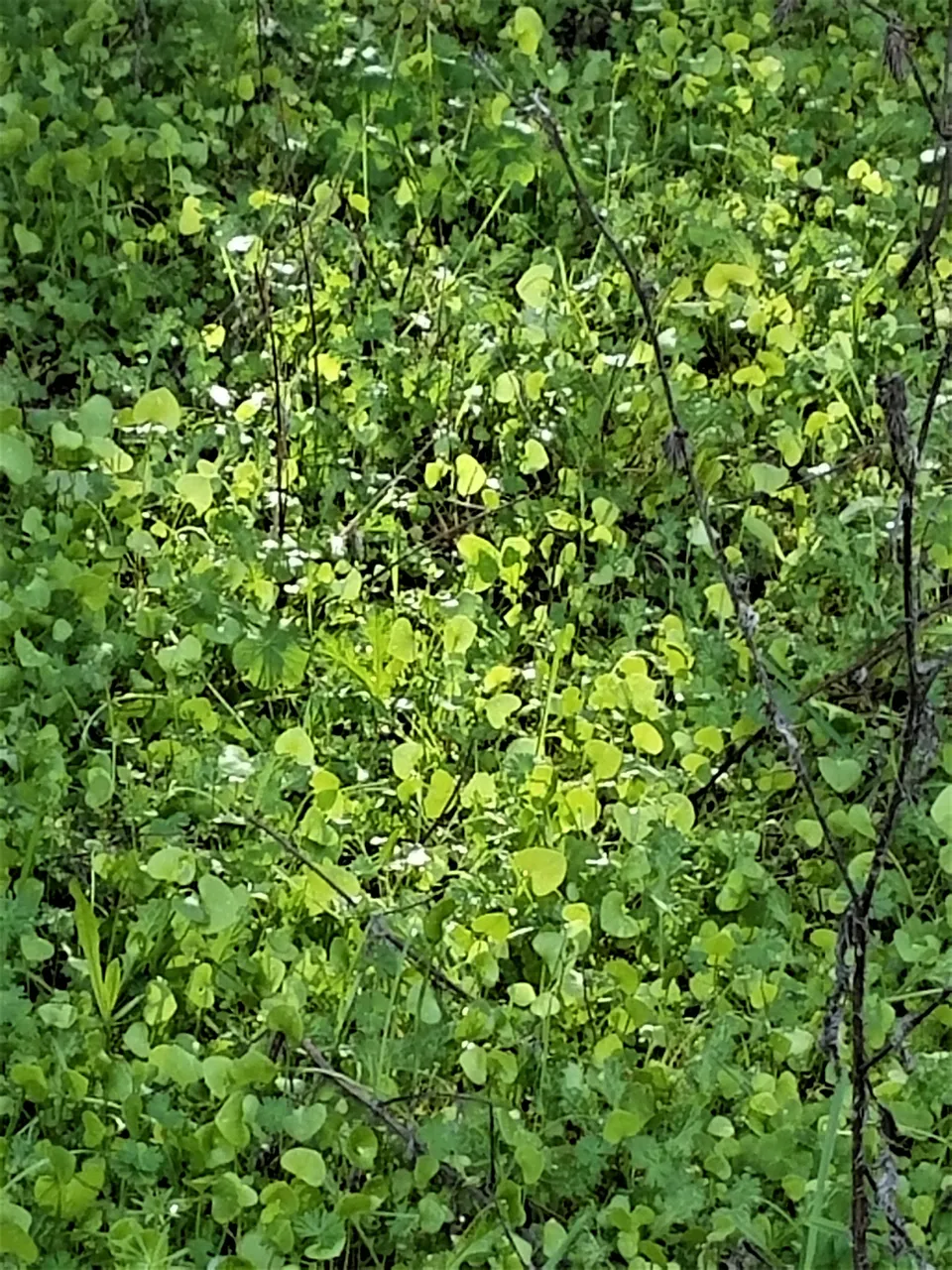
If I had enough helpers, I could pick enough salad right now to feed dozens of people. But plenty of people will not eat something that's been growing wild. Down the hill, they pay several dollars per pound for salad greens at the grocery store, but they neglect this free source of goodness growing in the hills. Once picked, miner’s lettuce is very delicate and does not last more than a couple of days in the refrigerator. And once the stems and leaves get tough in a week or two, the season will be over. It's best eaten fresh and raw: no salad dressing needed!
This oak tree has a scar that looks like a baboon.
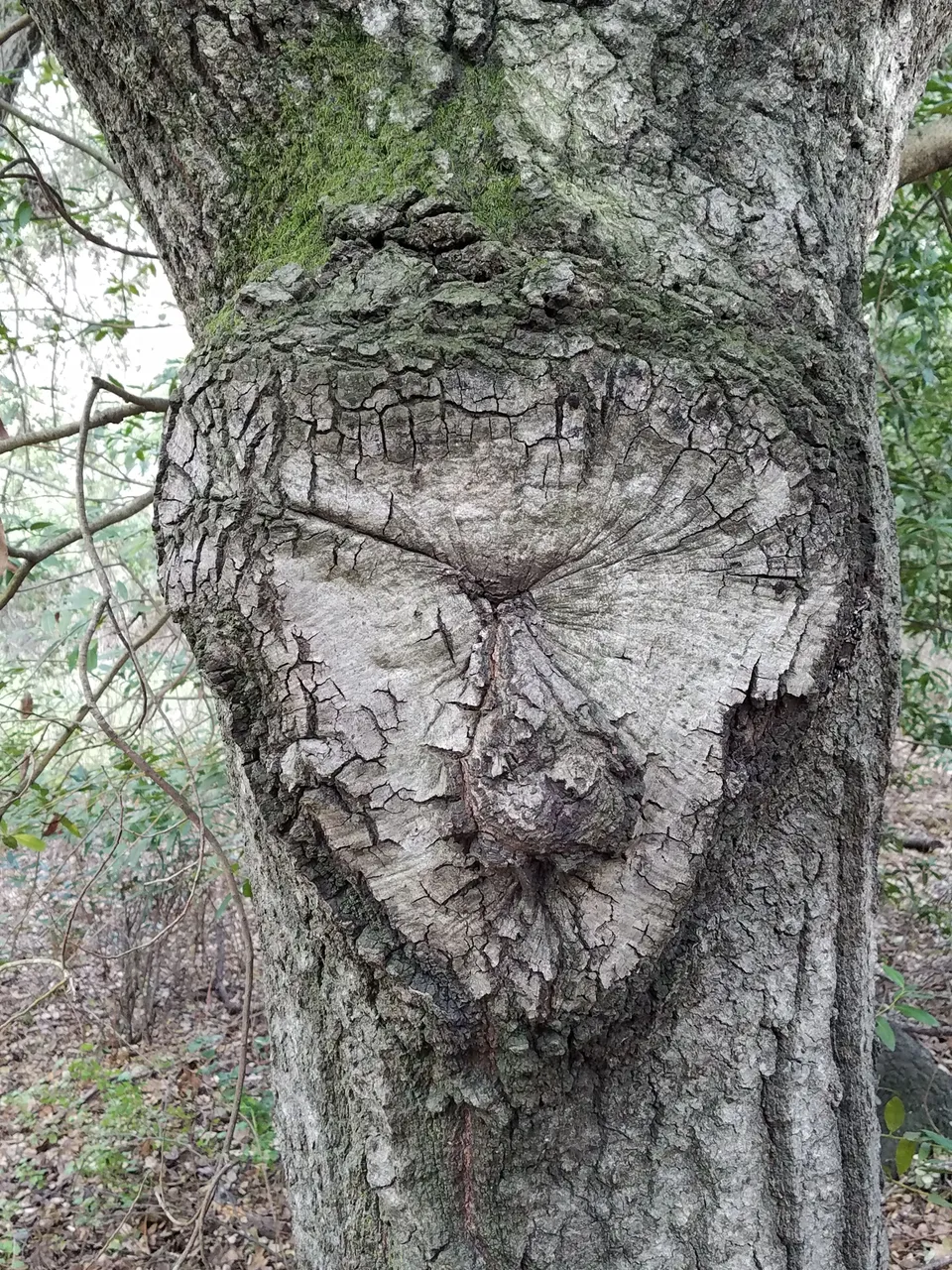
There were no baboons in the forest, but...
While under the oaks, we came across some dirt mounds near holes. This one was freshly dug and so we waited. Sure enough, a gopher appeared! It was still digging and we saw it trying to raise its body up to get something from the ground.
Gophers typically eat roots and plants they can drag down underground, but occasionally they’ll come up to grab something from the surface. Because there were no plants around, but there were acorn nuts scattered among the brown leaves, this gopher must have been hunting for acorns. Gophers are practically blind, especially when they venture above ground, so they rely on sound and smell to find their food.
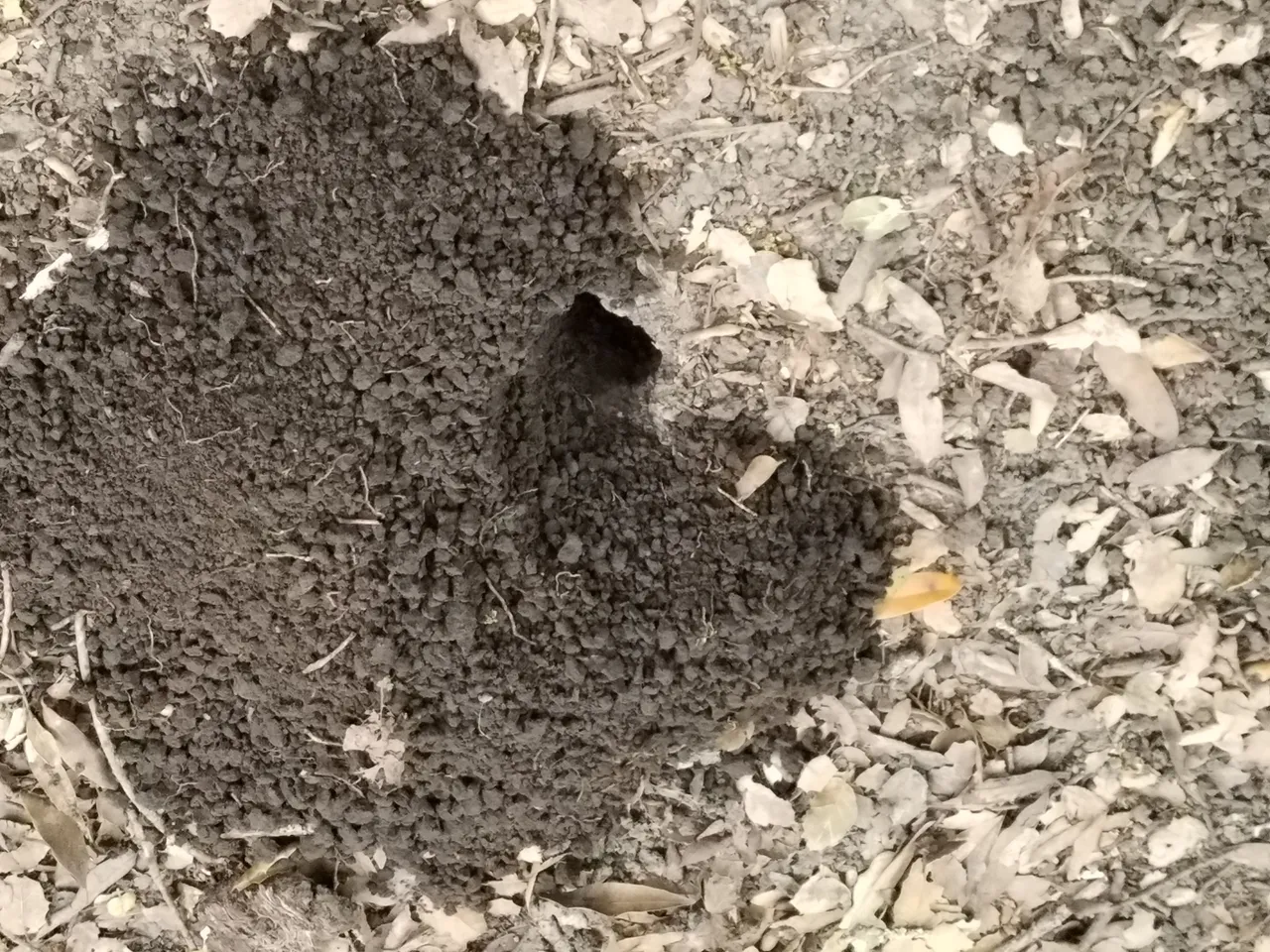
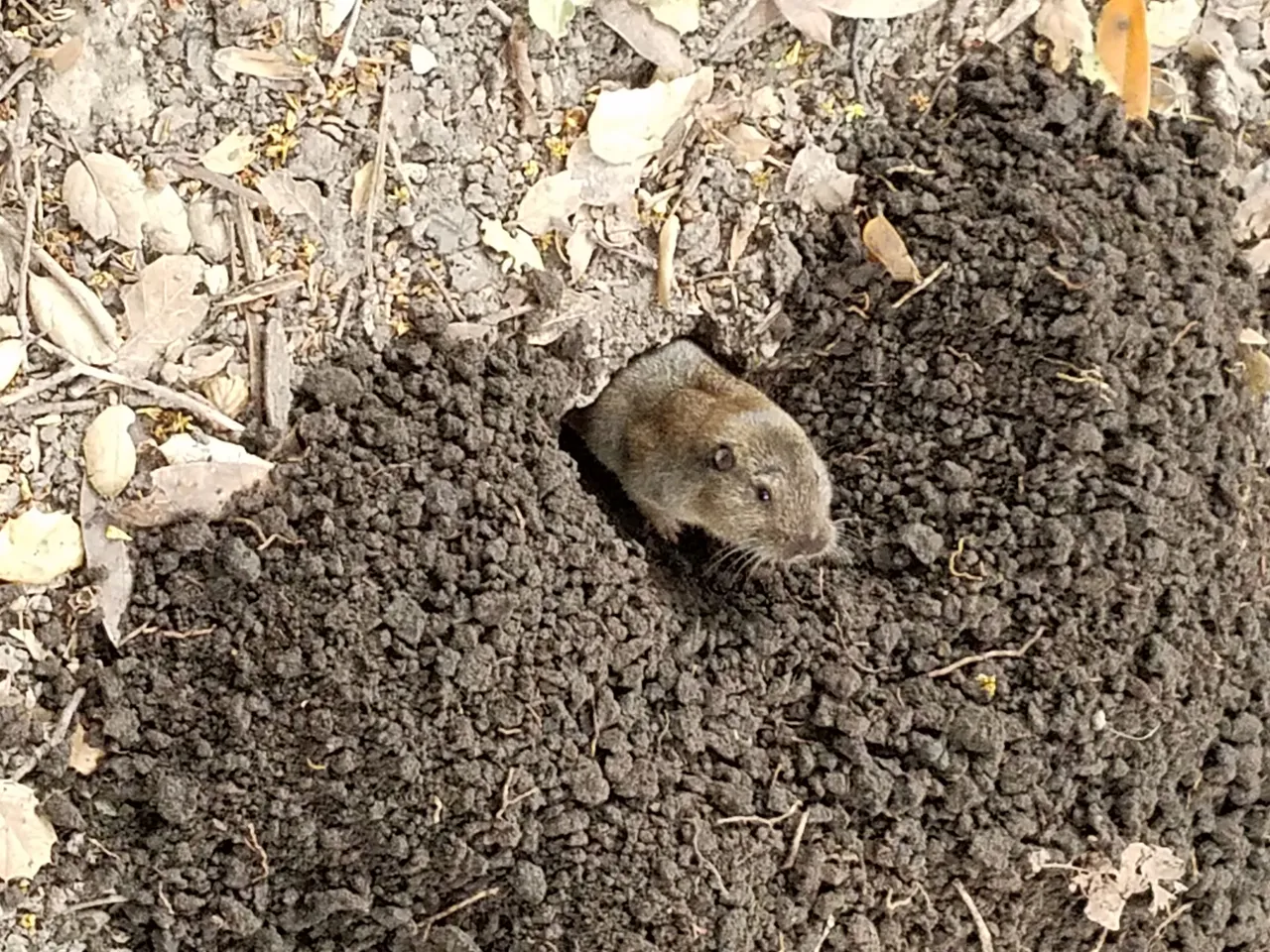
Sources:
https://en.wikipedia.org/wiki/Claytonia_perfoliata
https://www.superfoods-for-superhealth.com/miners-lettuce.html
http://www.myfitnesspal.com/food/calories/produce-miners-lettuce-wild-302959017
http://www.paleotechnics.com/Articles/Bayarticle.html
https://plants.usda.gov/plantguide/pdf/cs_umca.pdf
Top image: Twisty oak tree with dark green bay leaves in the background. All photos by the author.